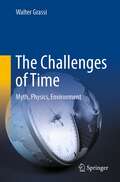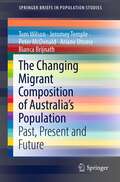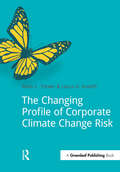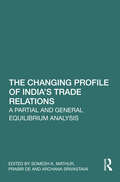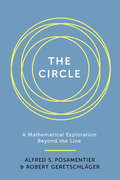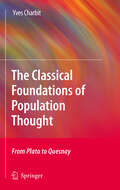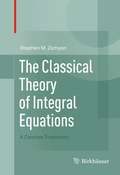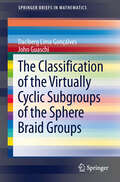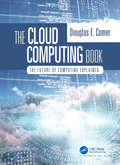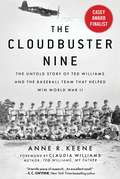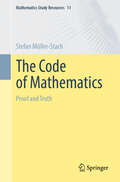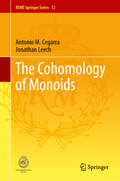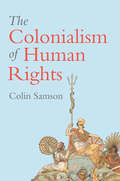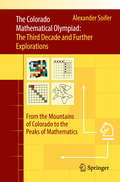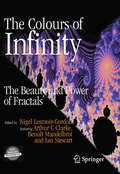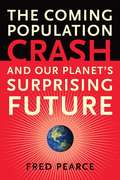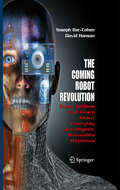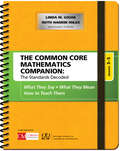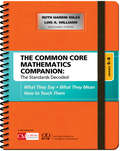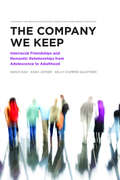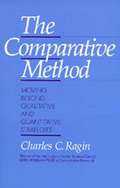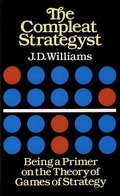- Table View
- List View
The Challenges of Time: Myth, Physics, Environment
by Walter GrassiThis book represents a journey through the history of science in regards to the concept of time, specifically, the question as to whether it is absolute, relative, or irreversible. The best-known contribution, or at least the most popular one, came from Einstein. He took the illusion that time was universal, a concept dating back, essentially, to Galileo and Newton, and shattered it, both within and without the scientific community. Thermodynamics teaches us that time has a preferential direction, i.e., forward, and is irreversible, as shown by Prigogine and his theories on dissipative structures and complex systems. Time is not only an “external spectator” to what happens, but assiduously takes part in making it happen. The concept of thermodynamics shows us how time is linked with environmental issues, as creator and destroyer. The author explores the relationships of cause and effect and how it can help in measuring the various eras of the planet, as well as understanding the beings that inhabit it. This book will be a valuable read for students, researchers, and interested laypersons alike.
The Changing Migrant Composition of Australia’s Population: Past, Present and Future (SpringerBriefs in Population Studies)
by Tom Wilson Peter McDonald Bianca Brijnath Jeromey Temple Ariane UtomoThis book looks at how Australia's migrant population composition is likely to change over coming decades. The book divides Australia's population into 48 countries of birth groupings and projects the birthplace populations out to 2066 according to the range of scenarios. These projections indicate a massive shift in Australia’s migrant composition from a European to an Asian-dominated population over the coming decades—a change which can be interpreted as a third demographic transition. By providing detailed consideration of the implications of the changing population composition, this book is a great resource for academics, government and private sector services.
The Changing Profile of Corporate Climate Change Risk (Doshorts Ser.)
by Mark Trexler Laura KosloffThis book will help business executives to (1) rethink their perceptions of climate risk (2) evaluate whether their company is effectively positioned, and (3) make informed and prudent business decisions about climate change risk in an environment rife with policy uncertainty.Business risk associated with climate change is commonly assumed to be primarily policy driven. Many companies internalize the current stalemate over global climate policy into a perception that climate risk is no longer a critical issue. Business climate risks, however, include: Operational and Supply Chain (Physical) Risk, Brand Risk, Market-driven Structural Risk, Liability Risk.As national and global policy to materially reduce climate change is delayed, it is business-prudent to assume that the level of climate risk is increasing. Even if policy risk might seem lower today than a few years ago, political will can change quickly. Should physical impacts of climate change manifest in dramatic ways, for example, draconian climate policy is likely to follow quickly. These conditions create a complex and shifting business risk environment, and most companies either overlook or substantially underestimate key climate risks. How many companies, for example, are positioned for material climate change outcomes, whether physical or regulatory? Companies with little climate change exposure may not face much downside risk from taking a wait-and-see approach. For those with greater exposure, being "too late" to respond will mean costs and competitive impacts that could have been avoided. Being "too early," however, can mean being penalized later for actions that reduce a company’s emissions today, or competitive disadvantage from getting too far out in front of competitors.
The Changing Profile of India’s Trade Relations: A Partial and General Equilibrium Analysis
by Somesh K. Mathur, Prabir De and Archana SrivastavaThis book unravels the complex spectrum of trade policy in India with the help of partial and general equilibrium models. It evaluates India’s recent trade deals with the UAE, Australia, European Free Trade Area (EFTA), and Mauritius, among others.Using applied general equilibrium methods to analyse recent debates about the conduct of India’s trade policy, this book aims to present how the barriers to trade have been affecting trade flows. It further presents a set of large-scale computable general equilibrium simulations of the effects of changes in trade barriers. It also explores India's need to deal strategically with China and provide different economic solutions, despite the conflicts along their international borders. Moreover, it focuses on how India, through its trade orientation, needs to manage its natural resources and deal with land scarcity.The volume will be of interest to scholars and researchers of international trade and finance, business economics, and econometrics. It will also be of interest to foreign trade experts, researchers, policy makers and government officials, among others.
The Chief Data Officer Management Handbook: Set Up and Run an Organization’s Data Supply Chain
by Martin TrederThere is no denying that the 21st century is data driven, with many digital industries relying on careful collection and analysis of mass volumes of information. A Chief Data Officer (CDO) at a company is the leader of this process, making the position an often daunting one. The Chief Data Officer Management Handbook is here to help.With this book, author Martin Treder advises CDOs on how to be better prepared for their swath of responsibilities, how to develop a more sustainable approach, and how to avoid the typical pitfalls. Based on positive and negative experiences shared by current CDOs, The Chief Data Officer Management Handbook guides you in designing the ideal structure of a data office, implementing it, and getting the right people on board.Important topics such as the data supply chain, data strategy, and data governance are thoughtfully covered by Treder. As a CDO it is important to use your position effectively with your entire team. The Chief Data Officer Management Handbook allows all employees to take ownership in data collaboration. Data is the foundation of present and future tech innovations, and you could be the leader that makes the next big impact.What You Will LearnApply important elements of effective data managementGain a comprehensive overview of all areas of data (which are often managed independently Work with the data supply chain, from data acquisition to its usage, a review of all relevant stakeholders, data strategy, and data governanceWho This Book is ForCDOs, data executives, data advisors, and all professionals looking to understand about how a data office functions in an organization.
The Circle: A Mathematical Exploration beyond the Line
by Alfred S. Posamentier Robert GeretschlägerThe circle has fascinated mathematicians since ancient times. This entertaining book describes in layperson's terms the many intriguing properties of this fundamental shape. If math has intimidated you, this may be the ideal book to help you appreciate the discipline through one of its most important elements.The authors begin with a brief review of the basic properties of the circle and related figures. They then show the many ways in which the circle manifests itself in the field of geometry--leading to some amazing relationships and truly important geometric theorems. In addition, they explore remarkable circle constructions and demonstrate how all constructions in geometry that usually require an unmarked straightedge and a compass can also be done with the compass alone. Among other things, the reader will learn that circles can generate some unusual curves - many even quite artistic. Finally, the role of circles in art and architecture and a discussion of the circle's place on the sphere bring "full circle" this presentation of a key element of geometry.
The Classical Foundations of Population Thought
by Yves CharbitWhereas the history of demography as a social science has been amply explored, that of the construction of the concept of population has been neglected. Specialists systematically ignore a noteworthy paradox: strictly speaking, the great intellectual figures of the past dealt with in this book have not produced demographic theories or doctrines as such, but they have certainly given some thought to population at both levels. First, the central epistemological and methodological orientation of the book is presented. Ideas on population, far from being part of the harmonious advancement of knowledge are the product of their context, that is evidently demographic, but also economic, political and above all intellectual. Then the ideas on population of Plato, Bodin, the French mercantilists, Quesnay and the physiocrats are examined under this light. The last chapter addresses the implicit philosophical, economic and political issues of population thought.
The Classical Theory of Integral Equations
by Stephen M. ZemyanThe Classical Theory of Integral Equations is a thorough, concise, and rigorous treatment of the essential aspects of the theory of integral equations. The book provides the background and insight necessary to facilitate a complete understanding of the fundamental results in the field. With a firm foundation for the theory in their grasp, students will be well prepared and motivated for further study. Included in the presentation are: A section entitled Tools of the Trade at the beginning of each chapter, providing necessary background information for comprehension of the results presented in that chapter; Thorough discussions of the analytical methods used to solve many types of integral equations; An introduction to the numerical methods that are commonly used to produce approximate solutions to integral equations; Over 80 illustrative examples that are explained in meticulous detail; Nearly 300 exercises specifically constructed to enhance the understanding of both routine and challenging concepts; Guides to Computation to assist the student with particularly complicated algorithmic procedures. This unique textbook offers a comprehensive and balanced treatment of material needed for a general understanding of the theory of integral equations by using only the mathematical background that a typical undergraduate senior should have. The self-contained book will serve as a valuable resource for advanced undergraduate and beginning graduate-level students as well as for independent study. Scientists and engineers who are working in the field will also find this text to be user friendly and informative.
The Classification of the Virtually Cyclic Subgroups of the Sphere Braid Groups
by John Guaschi Daciberg Lima GoncalvesThis manuscript is devoted to classifying the isomorphism classes of the virtually cyclic subgroups of the braid groups of the 2-sphere. As well as enabling us to understand better the global structure of these groups, it marks an important step in the computation of the K-theory of their group rings. The classification itself is somewhat intricate, due to the rich structure of the finite subgroups of these braid groups, and is achieved by an in-depth analysis of their group-theoretical and topological properties, such as their centralisers, normalisers and cohomological periodicity. Another important aspect of our work is the close relationship of the braid groups with mapping class groups. This manuscript will serve as a reference for the study of braid groups of low-genus surfaces, and isaddressed to graduate students and researchers in low-dimensional, geometric and algebraic topology and in algebra.
The Cloud Computing Book: The Future of Computing Explained
by Douglas ComerThis latest textbook from bestselling author, Douglas E. Comer, is a class-tested book providing a comprehensive introduction to cloud computing. Focusing on concepts and principles, rather than commercial offerings by cloud providers and vendors, The Cloud Computing Book: The Future of Computing Explained gives readers a complete picture of the advantages and growth of cloud computing, cloud infrastructure, virtualization, automation and orchestration, and cloud-native software design.The book explains real and virtual data center facilities, including computation (e.g., servers, hypervisors, Virtual Machines, and containers), networks (e.g., leaf-spine architecture, VLANs, and VxLAN), and storage mechanisms (e.g., SAN, NAS, and object storage). Chapters on automation and orchestration cover the conceptual organization of systems that automate software deployment and scaling. Chapters on cloud-native software cover parallelism, microservices, MapReduce, controller-based designs, and serverless computing. Although it focuses on concepts and principles, the book uses popular technologies in examples, including Docker containers and Kubernetes. Final chapters explain security in a cloud environment and the use of models to help control the complexity involved in designing software for the cloud.The text is suitable for a one-semester course for software engineers who want to understand cloud, and for IT managers moving an organization’s computing to the cloud.
The Cloudbuster Nine: The Untold Story of Ted Williams and the Baseball Team That Helped Win World War II
by Claudia Williams Anne R. KeeneIn 1943, while the New York Yankees and St. Louis Cardinals were winning pennants and meeting in that year's World Series, one of the nation's strongest baseball teams practiced on a skinned-out college field in the heart of North Carolina. Ted Williams, Johnny Pesky, and Johnny Sain were among a cadre of fighter-pilot cadets who wore the Cloudbuster Nine baseball jersey at an elite Navy training school at the University of North Carolina at Chapel Hill. As a child, Anne Keene's father, Jim Raugh, suited up as the team batboy and mascot. He got to know his baseball heroes personally, watching players hit the road on cramped, tin-can buses, dazzling factory workers, kids, and service members at dozens of games, including a war-bond exhibition with Babe Ruth at Yankee Stadium.Jimmy followed his baseball dreams as a college All-American but was crushed later in life by a failed major-league bid with the Detroit Tigers. He would have carried this story to his grave had Anne not discovered his scrapbook from a Navy school that shaped America's greatest heroes including George H.W. Bush, Gerald Ford, John Glenn, and Paul "Bear" Bryant. With the help of rare images and insights from World War II baseball veterans such as Dr. Bobby Brown and Eddie Robinson, the story of this remarkable team is brought to life for the first time in The Cloudbuster Nine: The Untold Story of Ted Williams and the Baseball Team That Helped Win World War II.
The Code of Mathematics: Proof and Truth (Mathematics Study Resources #11)
by Stefan Müller-StachInspired by recent developments in dependent type theory and infinity categories, this book presents a history of ideas around the topics of truth, proof, equality and equivalence. Besides selected ideas of Platon, Aristoteles, Leibniz, Kant, Frege and others, the results of Gödel and Tarski on incompleteness, undecidability and truth in deductive systems and their semantic models are covered. The main focus of this textbook is on dependent type theory and its recent variant homotopy type theory. Such theories contain identity types, which give a new understanding of equality, symmetry, equivalence and isomorphism in a conceptual way. The interaction of type theory and infinity category theory yields a new paradigm for a structural view on mathematics. This supports the tendencies towards formalising mathematics with the help of proof assistants. This book was first published in German. The translation was done with the help of artificial intelligence. A subsequent human revision was done primarily in terms of content.
The Cohomology of Monoids (RSME Springer Series #12)
by Antonio M. Cegarra Jonathan LeechThis monograph covers topics in the cohomology of monoids up through recent developments. Jonathan Leech’s original monograph in the Memoirs of the American Mathematical Society dates back to 1975. This book is an organized, accessible, and self-contained account of this cohomology that includes more recent significant developments that were previously scattered among various publications, along with completely new material. It summarizes the original Leech theory and provides a modern and thorough treatment of the cohomological classification of coextensions of both monoids and monoidal groupoids, including the case of monoids with operators. This cohomology is also compared to the classical Eilenberg-Mac Lane and Hochschild-Mitchell cohomologies. Connections are also established with the Lausch-Loganathan cohomology theory for inverse semigroups, the Gabriel-Zisman cohomology of simplicial sets, the Wells cohomology of small categories (also known as Baues-Wirschingcohomology), Grothendieck sheaf cohomology, and finally Beck’s triple cohomology. It also establishes connections with Grillet’s cohomology theory for commutative semigroups. The monograph is aimed at researchers in the theory of monoids, or even semigroups, and its interface with category theory, homological algebra, and related fields. However, it is also written to be accessible to graduate students in mathematics and mathematicians in general.
The Colonialism of Human Rights: Ongoing Hypocrisies of Western Liberalism
by Colin SamsonDo so-called universal human rights apply to indigenous, formerly enslaved and colonized peoples?This trenchant book brings human rights into conversation with the histories and afterlives of Western colonialism and slavery. Colin Samson examines the paradox that the nations that credit themselves with formulating universal human rights were colonial powers, settler colonists and sponsors of enslavement. Samson points out that many liberal theorists supported colonialism and slavery, and how this illiberalism plays out today in selective, often racist processes of recognition and enforcement of human rights. To reveal the continuities between colonial histories and contemporary events, Samson connects British, French and American colonial theories and practice to the notion of non-universal human rights. Vivid illustrations and case studies of racial exceptions to human rights are drawn from the afterlives of the enslaved and colonized, as well as recent events such as American police killings of black people, the treatment of Algerian harkis in France, the Windrush scandal in Britain and the militarized suppression of the Standing Rock Water Protectors movement. Advocating for reparative justice and indigenizing law, Samson argues that such events are not a failure of liberalism so much as an inbuilt racial dynamic of it.
The Colorado Mathematical Olympiad: The Third Decade and Further Explorations
by Alexander SoiferNow in its third decade, the Colorado Mathematical Olympiad (CMO), founded by the author, has become an annual state-wide competition, hosting many hundreds of middle and high school contestants each year. This book presents a year-by-year history of the CMO from 2004-2013 with all the problems from the competitions and their solutions. Additionally, the book includes 10 further explorations, bridges from solved Olympiad problems to 'real' mathematics, bringing young readers to the forefront of various fields of mathematics. This book contains more than just problems, solutions, and event statistics -- it tells a compelling story involving the lives of those who have been part of the Olympiad, their reminiscences of the past and successes of the present. I am almost speechless facing the ingenuity and inventiveness demonstrated in the problems proposed in the third decade of these Olympics. However, equally impressive is the drive and persistence of the originator and living soul of them. It is hard for me to imagine the enthusiasm and commitment needed to work singlehandedly on such an endeavor over several decades. After decades of hunting for Olympiad problems, and struggling to create Olympiad problems, he has become an extraordinary connoisseur and creator of Olympiad problems. The Olympiad problems were very good, from the beginning, but in the third decade the problems have become extraordinarily good. Every brace of 5 problems is a work of art. The harder individual problems range in quality from brilliant to work-of-genius. . . The same goes for the "Further Explorations" part of the book. Great mathematics and mathematical questions are immersed in a sauce of fascinating anecdote and reminiscence. If you could have only one book to enjoy while stranded on a desert island, this would be a good choice. Like Gauss, Alexander Soifer would not hesitate to inject Eureka! at the right moment. Like van der Waerden, he can transform a dispassionate exercise in logic into a compelling account of sudden insights and ultimate triumph. -- Cecil Rousseau Chair, USA Mathematical Olympiad Committee A delightful feature of the book is that in the second part more related problems are discussed. Some of them are still unsolved. --Paul Erdős The book is a gold mine of brilliant reasoning with special emphasis on the power and beauty of coloring proofs. Strongly recommended to both serious and recreational mathematicians on all levels of expertise. --Martin Gardner
The Colours of Infinity
by Nigel Lesmoir-GordonThe groundbreaking documentary (accompanying this book), introduced by Arthur C. Clarke, has been shown in over 50 countries around the world. Twenty five years ago it brought the subject of fractals to the attention of the general public for the first time. The contributors to the film are joined in this comprehensive survey of fractal theory and practice by some other leading experts in the field. - Beautifully and copiously illustrated, this latest edition also comes with an e-copy of the groundbreaking TV documentary - Brings fractal geometry up to date by gathering the thoughts and enthusiasms of the foremost writers and researchers in the field - A new chapter from Benoît Mandelbrot, the mathematician and founder of fractal geometry, makes this a 'must-read' for anyone with an interest in fractal theory - Includes contributions from world leaders including Sir Arthur C Clarke, Michael Barnsley, and Ian Stewart
The Coming Population Crash and Our Planet's Surprising Future
by Fred PearceA leading environmental writer looks at the unexpected effects—and possible benefits—of a shrinking, graying population. Over the last century, the world’s population quadrupled and fears of overpopulation flared, with baby booms blamed for genocide and terrorism, and overpopulation singled out as the primary factor driving global warming. Yet, surprisingly, it appears that the population explosion is past its peak—by mid-century, the world’s population will be declining for the first time in over seven hundred years. In The Coming Population Crash, veteran environmental writer Fred Pearce reveals the dynamics behind this dramatic shift and describes the environmental, social, and economic effects of our surprising demographic future.
The Coming Robot Revolution
by David Hanson Adi Marom Yoseph Bar-CohenThis book discusses the emergence of humanlike robots into our everyday world. It covers the trends, possibilities, and concerns we will all feel with their emergence. Robots will walk, talk, and look ever more like people, and with the speed at which new technologies develop, this may happen very soon. Robots will be in homes, in space, in workplaces, in hospitals--everywhere. Their capabilities will soon surpass what has been usually considered science fiction. In what directions will the technology be taking us, and how will the presence of these robots challenge our identity? This book explores the fascinating implications of robot technology while alerting of its possibly disturbing flipside.
The Common Core Mathematics Companion: What They Say, What They Mean, How to Teach Them (Corwin Mathematics Ser.)
by Ruth Harbin Miles Linda M. GojakIn the 12 short months since the ELA versions of The Common Core Companions, Grades K-2 and 3-5, burst on the scene, they’ve already assisted tens of thousands of teachers with the day-to-day “what you do.” Teachers’ one big criticism: what about mathematics? Luckily NCTM past-president Linda Gojak and mathematics coach Ruth Harbin Miles stepped up to the task. The result? That version of the mathematics standards you wish you had.
The Common Core Mathematics Companion: What They Say, What They Mean, How to Teach Them (Corwin Mathematics Ser.)
by Ruth Harbin Miles Linda M. GojakIn the 12 short months since the ELA versions of The Common Core Companions, Grades K-2 and 3-5, burst on the scene, they’ve already assisted tens of thousands of teachers with the day-to-day “what you do.” Teachers’ one big criticism: what about mathematics? Luckily NCTM past-president Linda Gojak and mathematics coach Ruth Harbin Miles stepped up to the task. The result? That version of the mathematics standards you wish you had.
The Common Core Mathematics Companion: What They Say, What They Mean, How to Teach Them (Corwin Mathematics Ser.)
by Ruth Harbin Miles Lois A. Williams"The Common Core Mathematics Companion 6-8 offers a practical guide for implementing the CCSS Math Standards. Teachers will appreciate the misconception alerts and ideas for differentiation." — Jay McTighe, Author and Consultant When it comes to math, standards-aligned is achievement-aligned… In the short time since The Common Core Mathematics Companions, Grades K-2 and 3-5 burst on the scene, they have been lauded as the best resources for making critical math ideas easy to teach. With this brand-new 6-8 volume, middle school math success is at your fingertips. Page by page, the authors lay out the pieces to a cutting-edge curriculum, helping you to: Get the inside scoop on which standards connect, what key vocabulary means, and time-saving tables showing where to focus instruction for each grade Write curriculum for: ratios and proportional relationships, the number system, expressions and equations, functions, geometry, and statistics & probability Use the What to Teach pages to deliver powerful standards-based lessons Learn effective techniques to create an environment where all students can experience math break-throughs Incorporate the Standards for Mathematical Practice to improve students’ ability to problem solve, construct viable arguments, use tools strategically, attend to precision, and more The Common Core Mathematics Companion, Grades 6–8 has what every middle school needs to provide students with the foundation for the concepts and skills they will be expected to know in grade 9–12. Ruth Harbin Miles is a mathematics coach, with special expertise in developing teachers’ content knowledge and strategies for engaging students to achieve high mathematics standards. A serving member on the Board of Directors for the National Council of Teachers of Mathematics and the National Council of Supervisors of Mathematics, Ruth is a co-author with Linda Gojak of The Common Core Mathematics Companions, K–2 and 3–5 (Corwin). Lois Williams, Ed.D., who taught mathematics in grades K–8 for 20 years, is currently an adjunct professor at Mary Baldwin College and an International Fellow with the Charles A. Dana Center, training teachers in the College and Career Readiness Standards She has been honored with a Fulbright Teacher Exchange and the Virginia Middle School Mathematics Teacher of the Year award.
The Common Core Mathematics Companion: What They Say, What They Mean, How to Teach Them (Corwin Mathematics Ser.)
by Ruth Harbin Miles Lois A. Williams"The Common Core Mathematics Companion 6-8 offers a practical guide for implementing the CCSS Math Standards. Teachers will appreciate the misconception alerts and ideas for differentiation." — Jay McTighe, Author and Consultant When it comes to math, standards-aligned is achievement-aligned… In the short time since The Common Core Mathematics Companions, Grades K-2 and 3-5 burst on the scene, they have been lauded as the best resources for making critical math ideas easy to teach. With this brand-new 6-8 volume, middle school math success is at your fingertips. Page by page, the authors lay out the pieces to a cutting-edge curriculum, helping you to: Get the inside scoop on which standards connect, what key vocabulary means, and time-saving tables showing where to focus instruction for each grade Write curriculum for: ratios and proportional relationships, the number system, expressions and equations, functions, geometry, and statistics & probability Use the What to Teach pages to deliver powerful standards-based lessons Learn effective techniques to create an environment where all students can experience math break-throughs Incorporate the Standards for Mathematical Practice to improve students’ ability to problem solve, construct viable arguments, use tools strategically, attend to precision, and more The Common Core Mathematics Companion, Grades 6–8 has what every middle school needs to provide students with the foundation for the concepts and skills they will be expected to know in grade 9–12. Ruth Harbin Miles is a mathematics coach, with special expertise in developing teachers’ content knowledge and strategies for engaging students to achieve high mathematics standards. A serving member on the Board of Directors for the National Council of Teachers of Mathematics and the National Council of Supervisors of Mathematics, Ruth is a co-author with Linda Gojak of The Common Core Mathematics Companions, K–2 and 3–5 (Corwin). Lois Williams, Ed.D., who taught mathematics in grades K–8 for 20 years, is currently an adjunct professor at Mary Baldwin College and an International Fellow with the Charles A. Dana Center, training teachers in the College and Career Readiness Standards She has been honored with a Fulbright Teacher Exchange and the Virginia Middle School Mathematics Teacher of the Year award.
The Company We Keep: Interracial Friendships and Romantic Relationships from Adolescence to Adulthood (American Sociological Association's Rose Series)
by Grace Kao Kara Joyner Kelly Stamper BalistreriWith hate crimes on the rise and social movements like Black Lives Matter bringing increased attention to the issue of police brutality, the American public continues to be divided by issues of race. How do adolescents and young adults form friendships and romantic relationships that bridge the racial divide? In The Company We Keep, sociologists Grace Kao, Kara Joyner, and Kelly Stamper Balistreri examine how race, gender, socioeconomic status, and other factors affect the formation of interracial friendships and romantic relationships among youth. They highlight two factors that increase the likelihood of interracial romantic relationships in young adulthood: attending a diverse school and having an interracial friendship or romance in adolescence. While research on interracial social ties has often focused on whites and blacks, Hispanics are the largest minority group and Asian Americans are the fastest growing racial group in the United States. The Company We Keep examines friendships and romantic relationships among blacks, whites, Hispanics, and Asian Americans to better understand the full spectrum of contemporary race relations. Using data from the National Longitudinal Study of Adolescent to Adult Health, the authors explore the social ties of more than 15,000 individuals from their first survey responses as middle and high school students in the mid-1990s through young adulthood nearly fifteen years later. They find that while approval for interracial marriages has increased and is nearly universal among young people, interracial friendships and romantic relationships remain relatively rare, especially for whites and blacks. Black women are particularly disadvantaged in forming interracial romantic relationships, while Asian men are disadvantaged in the formation of any romantic relationships, both as adolescents and as young adults. They also find that people in same-sex romantic relationships are more likely to have partners from a different racial group than are people in different-sex relationships. The authors pay close attention to how the formation of interracial friendships and romantic relationships depends on opportunities for interracial contact. They find that the number of students choosing different-race friends and romantic partners is greater in schools that are more racially diverse, indicating that school segregation has a profound impact on young people’s social ties. Kao, Joyner, and Balistreri analyze the ways school diversity and adolescent interracial contact intersect to lay the groundwork for interracial relationships in young adulthood. The Company We Keep provides compelling insights and hope for the future of living and loving across racial divides.
The Comparative Method: Moving Beyond Qualitative and Quantitative Strategies
by Charles C. RaginProfessor Ragin proposes a synthetic new strategy, based on an application of Boolean algebra, that will combine the strengths of both qualitative and quantitative sociology. Elegantly accessible and germane to the work of all the social sciences, this book will garner interest, debate, and praise from many quarters.
The Compleat Strategyst: Being a Primer on the Theory of Games of Strategy
by J. D. WilliamsWhen J. D. Williams wrote this entertaining, witty introduction for the nonscientist, game theory was still a somewhat mysterious subject familiar to very few scientists beyond those researchers, like himself, working for the military. Now, over thirty years after its original publication as a Rand Corporation research study, his light-hearted though thoroughly effective primer is the recognized classic introduction to an increasingly applicable discipline. Used by amateurs, professionals, and students throughout the world in the classroom, on the job, and for personal amusement, the book has been through ten printings, and has been translated into at least five languages (including Russian and Japanese).Revised, updated, and available for the first time in an inexpensive paperback edition, The Compleat Strategyst is a highly entertaining text essential for anyone interested in this provocative and engaging area of modern mathematics. In fully illustrated chapters complete with everyday examples and word problems, Williams offers readers a working understanding of the possible methods for selecting strategies in a variety of situations, simple to complex. With just a basic understanding of arithmetic, anyone can grasp all necessary aspects of two-, three-, four-, and larger strategy games with two or more sets of inimical interests and a limitless array of zero-sum payoffs.As research and study continues not only in this new discipline but in the related areas of statistics, probability and behavioral science, understanding of games, decision making, and the development of strategies will be increasingly important. In the areas of economics, sociology, politics, and the military, game theory is sure to have an even wider impact. For students and amateurs fascinated by game theory's implications there is no better, immediately applicable, or more entertaining introduction to the subject than this engaging text by the late J. D. Williams, Professor of Mathematics at Princeton University and a member of the Research Council of The Rand Corporation.
